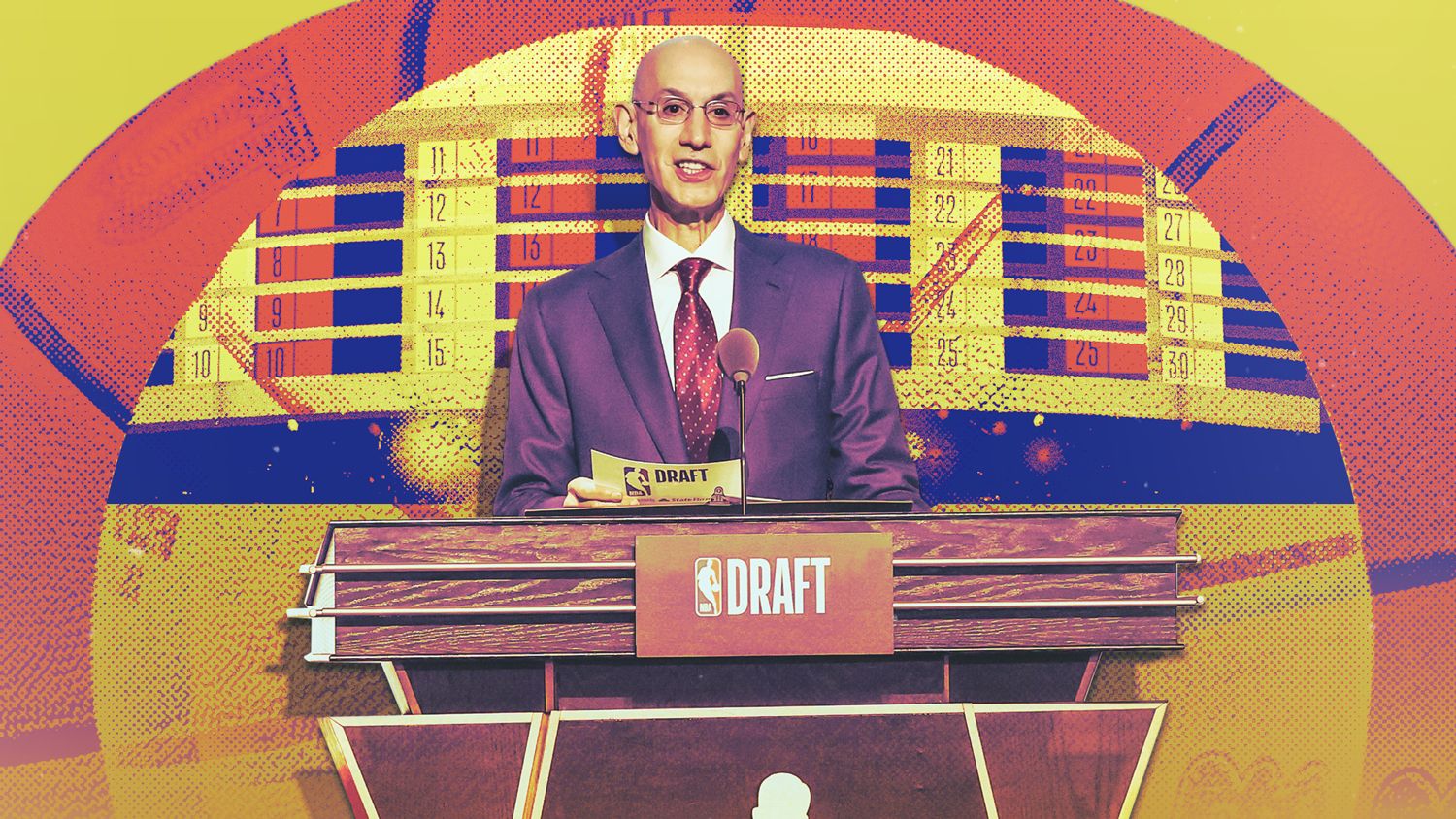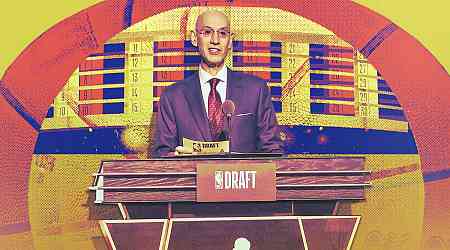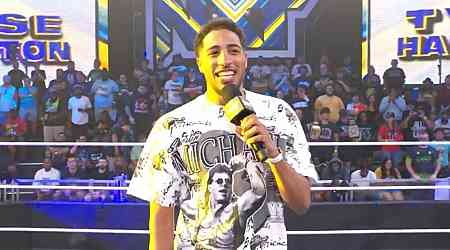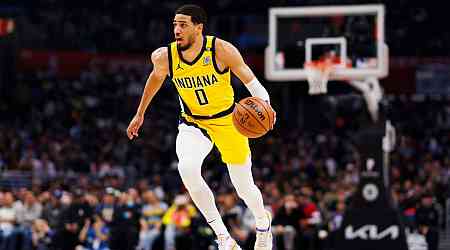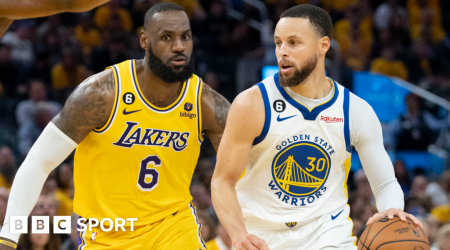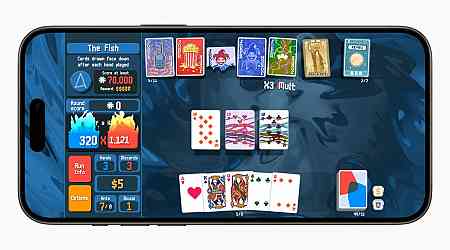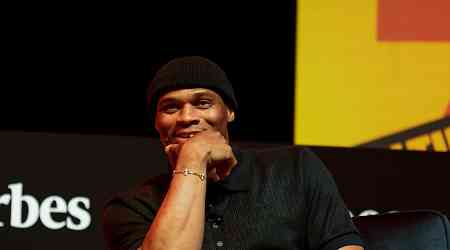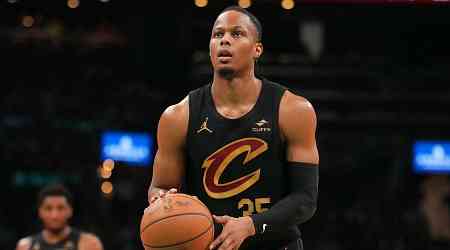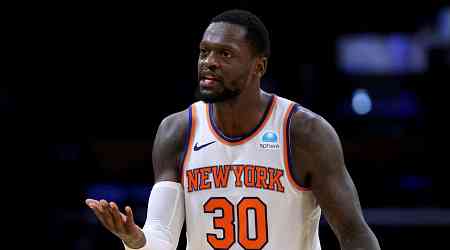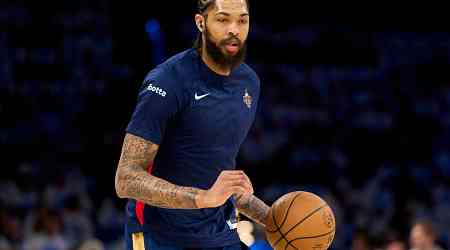With the NBA poised this season to consider expansion -- perhaps adding at least one franchise in the next two to three years, as we laid out in Tuesday's FAQ -- let's consider how any new team(s) would be built.
The NBA is a different league than it was when the last expansion franchise came aboard in 2004, with an increasingly Byzantine set of salary cap rules. Teams are far more forward-thinking and proactive than they were two decades ago, which could make for interesting choices as rosters are built through the expansion draft and beyond.
After NBA Insider Bobby Marks walks us through the rules around expansion, let's consider how an expansion draft with two teams -- which last happened in 1995 -- might play out if it took place following the 2024-25 season.
Based on current rosters and contracts for 2025-26, Marks put together protected lists for all 30 teams while NBA Insiders Tim Bontemps (Las Vegas) and Kevin Pelton (Seattle) took charge of two expansion drafts as part of the most recent episode of the "Brian Windhorst & The Hoop Collective" podcast.
We'll run through the teams they drafted and how expansion teams might set themselves up for long-term success.
Part I: NBA expansion FAQ | Jump to: Mock draft
How would the expansion draft work? Will there be rule changes to the drafts from the past expansions (1995, 2004)?
The Charlotte Bobcats (now Hornets) were the last team, in 2004, that went through an expansion draft.
That year, and in previous instances when the NBA held an expansion draft, existing NBA teams were each allowed to protect up to eight players under contract for the next season from being selected in the expansion draft.
Past expansion draft rules required that a team had to leave at least one player unprotected, even if the team had fewer than eight players under contract heading into the offseason. A player who had an option to become a free agent counted as a player who could be protected or left exposed.
For example, if the NBA were to hold an expansion draft in June 2025, the Milwaukee Bucks could leave Khris Middleton unprotected. Middleton has a $34 million player option. If an expansion team drafted Middleton, he could still become a free agent by declining the player option. In that case, the drafting expansion team would lose him without compensation.
If Middleton were selected, Milwaukee would then receive a $31 million trade exception (his salary from the 2024-25 season) that is available to acquire a player in a future trade.
Teams also were allowed to protect players who could become restricted free agents.
If the same rules were in place for the next expansion draft, the Golden State Warriors could protect a player such as Jonathan Kuminga, even though he is not under contract for next season. If Kuminga was not protected and subsequently selected, he would automatically become an unrestricted free agent, as the past expansion draft rules did not transfer RFA status to the expansion team. The drafting team would then again be at risk of losing a player for nothing. However, the player would not be allowed to re-sign with his original team, either.
In past expansion drafts, teams also were only allowed to select one player from each existing NBA franchise. This means that if a hypothetical Las Vegas franchise were to use its first pick in the expansion draft on a player from the Boston Celtics, neither it nor the other expansion team would be permitted to draft another Celtics player.
There were no two-way players in 2004, so the league will need to determine if they can be protected in a future expansion draft. Every two-way player whose contract is up normally becomes a restricted free agent.
What happened in the most recent expansion drafts and what can we learn?
In 1995, the Toronto Raptors and the Vancouver Grizzlies (now in Memphis) alternated picks until they selected one player from each of the other 27 existing NBA franchises.
The two teams had a coin toss to determine which one would select first. The Grizzlies won the toss but chose to defer, giving them the second pick in the expansion draft. Because of that, the Grizzlies got to choose higher than the Raptors in the 1995 rookie draft.
The Raptors finished the expansion draft with 14 players, and the Grizzlies selected 13.
In 2004, Charlotte could have selected 29 players (one from each team) in the expansion draft but chose 19.
Charlotte's front office took an approach in 2004 of selecting players who were restricted free agents. Out of the 19 players that Charlotte selected (a minimum of 14 was required), nine were restricted free agents. The only one of those nine who re-signed with Charlotte was Tamar Slay.
The standard roster rules during the regular season and offseason will likely apply.
A team can carry up to 21 players in the offseason and 18 (including three on two-way contracts) once the regular season begins.
How do expansion teams factor into the leaguewide draft?
In 1995 and 2004, the NBA slotted each expansion team in the first round.
Vancouver selected sixth and Toronto picked seventh in 1995. In 2004, Charlotte was given the No. 4 pick, and it traded up with the LA Clippers to get the No. 2 pick. None of the recent expansion teams has been eligible for the No. 1 pick in its first year. When the Raptors and Grizzlies entered the league, they also were ineligible for the No. 1 pick in their second season. The Raptors won the draft lottery in 1996 but were unable to pick first, so the No. 1 pick went to the Philadelphia 76ers (who drafted Allen Iverson).
Tim Bontemps breaks down whether it's more realistic for LeBron James to own an NBA team or win a fifth title.
How does the salary cap work for expansion teams?
Each expansion team has to work within a reduced salary cap for its first two seasons.
In July 2004, the Bobcats had $17.6 million in player salaries and were $11.8 million below the $29.4 million salary cap at the start of free agency.
If an expansion team was entering the league for the 2025-26 season, using that 66.6% figure, that team would be working with a salary cap of $102.9 million as compared to $154.6 million for the league's 30 existing franchises. The team would have 80% of the salary cap available the following season and the full cap available for Year 3.
An expansion team would be required to spend 90% of its lower $102.9 million salary cap by the first day of the regular season to reach the league-mandated salary floor.
One more thing to note is that a team can select a player in the expansion draft then waive him without his salary counting against the cap. The waived money still applies to the minimum salary requirement.
Mock NBA expansion draft
With the rules of a future expansion draft in place, it's time to see what it would look like in action.
For the purposes of this exercise, this draft is taking place as if it were the spring of 2025, ahead of the 2025-26 NBA season. Las Vegas and Seattle are currently the cities most likely to land expansion franchises, per Tuesday's FAQ, so they've been selected as team representatives in this hypothetical draft. Bontemps drafted for the Las Vegas expansion team, while Pelton drafted for Seattle.
Seattle won the coin toss. And with no rookie draft as part of this exercise, it decided to select first in the expansion draft. Teams alternated picks with the opportunity to offer trades to Marks, who was representing the existing 30 franchises.
What players are selected from the current 30 NBA teams and which mock GM walks away with the better team?
1. Seattle: Jaylin Williams, Oklahoma City Thunder
(Seattle receives OKC's best first-round pick in 2025)
Teams can make trades to protect their players, and the Thunder are an obvious candidate for such a deal because of their stockpile of young talent and surplus of picks. Specifically, in this exercise, Bobby was forced to leave Nikola Topic exposed a year after Oklahoma City drafted him No. 12 overall. I leveraged the threat of drafting Topic to land the Thunder's best 2025 first-round pick, which could come via swaps with both the Houston Rockets (top-10 protected) and LA Clippers or trades with the Philadelphia 76ers (top-six protected), Utah Jazz (top-10 protected) and Miami Heat (lottery protected).
One of those picks likely will end up in the lottery of what is projected as a deep draft, and I also added a good value in Williams, who will make the minimum in 2025-26, provided Oklahoma City exercises his team option.
2. Las Vegas: Johnny Furphy, Indiana Pacers
I would've taken Topic with the first pick and not thought twice about it. But it was an equally easy decision here in selecting Furphy second. The 19-year-old Australian rated extremely high in draft models. (I know my rival GM in this exercise was a big fan.) And for a team trying to develop young talent, he's a perfect fit as a wing with some real upside to grow into over time with my first pick.
3. Seattle: Miles McBride, New York Knicks
The extension McBride signed that made him New York's backup point guard after the Immanuel Quickley trade looks remarkably team-friendly, paying him $4.3 million in 2025-26 and $4 million in 2026-27. After McBride averaged 11.0 points per game in the playoffs, he could be my first starting point guard. That made him the choice over Mitchell Robinson, who also left unprotected.
4. Las Vegas: Dillon Brooks, Houston Rockets
(Brooks then is traded to Indiana for T.J. McConnell, Jarace Walker and Indiana's 2025 second-round pick)
When Bobby sent over his list of protected players, Brooks was instantly one of the guys I targeted because he could be flipped somewhere as a wing who can defend multiple positions on a descending deal. Indiana made sense as a target, and while I would've liked to get a first-round pick in the deal, I do like Walker -- who immediately becomes my starting power forward -- quite a bit. McConnell is a steady hand at the point for me to flip around for something else the following season.
5. Seattle: Toumani Camara, Portland Trail Blazers
Camara was the last of four players I felt were the most valuable of those available in the expansion draft. He started 49 games as a rookie in Portland thanks to his defensive versatility and adequate 34% 3-point shooting. Add in two years left at the minimum (the last a team option) and I considered Camara a better value than the veterans Portland left exposed: Deandre Ayton, Jerami Grant and Matisse Thybulle.
6. Las Vegas: De'Andre Hunter, Atlanta Hawks
(Las Vegas receives Sacramento's 2025 first-round pick via Atlanta)
Like Brooks, Hunter was a guy I targeted for a deal, as removing his salary from Atlanta's books the next two seasons will give it much-needed breathing room below the luxury tax to retain Jalen Johnson, among others. As a result, I was able to add into the deal Sacramento's protected first-round pick (top 12 in 2025, top 10 in 2026), one that should get me a mid-first-round pick in a talented 2025 draft.
7. Seattle: Collin Sexton, Utah Jazz
After unsuccessfully attempting to trade with the Chicago Bulls to pick Zach LaVine or Nikola Vucevic and the Golden State Warriors to pick Andrew Wiggins, I went with Sexton as an offensive playmaker for an expansion team. Sexton took a step forward last season, averaging 18.7 PPG on strong efficiency.
8. Las Vegas: Cory Joseph, Orlando Magic
(Las Vegas receives Denver's 2025 first-round pick via Orlando)
Orlando was yet another team with a player I quickly targeted when I received Bobby's list: Cole Anthony, who has developed into a nice combo guard off the bench for the Magic. I suspected the Magic might want to hang onto him, though, and I was right, as I was able to get Denver's 2025 first-rounder for taking Joseph in exchange. Joseph, who has a team option for the 2025-26 season, won't make it on the Las Vegas roster.
9. Seattle: Kyle Kuzma, Washington Wizards
With two years remaining on his contract at $21.5 million then descending to $19.4 million, Kuzma should have value if I look to flip him to another team. His modest salary fits more places than, for example, Jerami Grant's escalating $32 million contract.
10. Las Vegas: Brandon Clarke, Memphis Grizzlies
(Clarke is then traded to New Orleans for CJ McCollum and the Pelicans' 2025 first-round pick)
Here is yet another player I thought could net me some draft capital in Clarke, who is back from his torn Achilles tendon and has two years remaining on his deal at $12.5 million per year. That's why, after Memphis didn't want to give me a first-round pick to avoid taking him (or either Jake LaRavia or John Konchar), I took Clarke and flipped him to New Orleans in exchange for CJ McCollum -- getting New Orleans out of luxury tax jail and giving the Pelicans a big.
11. Seattle: Colby Jones, Sacramento Kings
Taken No. 34 overall in the 2023 draft, Jones played sparingly as a rookie but flashed versatility as a playmaker and a wing defender in the G League. Blocked in Sacramento by Keon Ellis and lottery pick Devin Carter, Jones will get a bigger role on an expansion team.
12. Las Vegas: Leonard Miller, Minnesota Timberwolves
Miller has had only a couple of cups of coffee in the NBA thus far with the Timberwolves, but the 6-foot-10 Canadian is an intriguing young talent with some upside, as he doesn't turn 21 years old until November. At this point in the draft that was a swing worth taking.
13. Seattle: Harrison Barnes, San Antonio Spurs
Barnes is the kind of consummate veteran an expansion team needs in the locker room, and he also is potentially flippable at the trade deadline in the final year of his deal at $19 million.
14. Las Vegas: Grant Williams, Charlotte Hornets
Williams is a proven postseason player who can guard multiple positions and hit 3s and is on a contract worth roughly $28 million over the next two seasons. That's a combination that can net me a positive asset in return, and at this point in the draft that is what I'm looking to do.
15. Seattle: Craig Porter Jr., Cleveland Cavaliers
Undrafted out of Wichita State, Porter spent much of his rookie season as the Cavaliers' backup point guard, averaging 15.8 points, 6.5 assists and 6.0 rebounds per 36 minutes. He's got two remaining seasons at the minimum.
16. Las Vegas: Neemias Queta, Boston Celtics
Queta, the NBA's first Portuguese player, is an intriguing rim-running center who has a chance to play a real role for Boston. He will fit nicely into my center rotation right away -- and might even become my starter.
17. Seattle: Paul Reed, Detroit Pistons
"B-Ball Paul" Reed has one non-guaranteed season remaining on his unorthodox deal at $8.1 million. Claimed by the Pistons using their waiver priority after the 76ers had to let him go to complete their offseason moves, Reed will compete with Grant Williams to be my starting center.
18. Las Vegas: Jakob Poeltl, Toronto Raptors
After multiple attempts to negotiate a trade with the Raptors to not select Poeltl, they balked at my price of a first-round pick, so I just took Poeltl instead. A solid center on a reasonable contract for the next couple of years, he is another player I am hoping to flip for future assets.
19. Seattle: A.J. Green, Milwaukee Bucks
Green has proved to be one of the NBA's better bench shooters over two seasons with Milwaukee, hitting 41% of his 3s and making more than four per 36 minutes. He'll be in the last year of his minimum contract.
20. Las Vegas: Jalen Pickett, Denver Nuggets
Pickett struggled last year as a rookie, but there is plenty of minutes to be played at point guard behind McConnell. It's at least worth bringing Pickett into camp to compete with some of the young players who will be coming in via the draft for a roster spot.
21. Seattle: Adem Bona, Philadelphia 76ers
Strong defensive stats made Bona a favorite of stats-based projections, so it's no wonder the analytical Sixers took him No. 41 overall in this year's draft.
22. Las Vegas: Duncan Robinson, Miami Heat
Robinson has one year that is partially guaranteed remaining on his contract, and as an elite volume 3-point shooter, he is someone I believe I can get some assets for as an expiring contract over the coming 12 months.
23. Seattle: Quentin Grimes, Dallas Mavericks
The first restricted free agent selected, Grimes will become an unrestricted free agent, but I'll inherit his Bird rights from the Mavs. I preferred Grimes' 3-and-D skill set, but it's possible fellow restricted free agent Jaden Hardy could make more sense for an expansion team.
24. Las Vegas: Nicolas Batum, LA Clippers
Batum might retire, but if he doesn't, I know there will be a robust market for his services among contenders, making him a choice I'm happy with this late in the draft. And if he retires, the money just comes off my books anyway.
25. Seattle: Gui Santos, Golden State Warriors
Taken 55th overall by the Warriors in 2022, Santos shot a promising 37% on 3s in limited action as a rookie.
26. Las Vegas: Bronny James, Los Angeles Lakers
The Lakers rebuffed my multiple offers to give me a second or two to avoid taking James, so I ultimately decided to take a swing on another young guy. Given I have several picks in the 2025 NBA draft, there's a real chance he won't make my roster, but it's a free look at a young player. No reason not to take it.
27. Seattle: Antonio Reeves, New Orleans Pelicans
An affordable flier, Reeves was the 47th pick of this year's draft by the Pelicans and signed a full NBA contract.
28. Las Vegas: Jalen Smith, Chicago Bulls
I'm a little surprised Smith is still sitting here at this point, after averaging almost 10 points and shooting over 40% from 3 for Indiana last season before signing a three-year deal with Chicago. I'll scoop him up and either add him to my big man rotation or throw him into a later deal.
29. Seattle: Ziaire Williams, Brooklyn Nets
With my training camp roster filling up, I took Williams as a restricted free agent, making him unrestricted.
30. Las Vegas: Passed
The only team that didn't have a player selected was the Phoenix Suns, who had only one player left available: Bradley Beal. We offered to take Beal for a 2031 unprotected first-round pick plus a pair of seconds, but Phoenix said no. As a result, Las Vegas said no to potentially saving Phoenix several hundred million dollars in combined payroll and luxury tax savings.


















